Three times the main and three times the hero
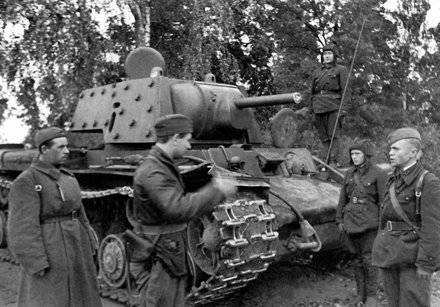
On December 27, 1938, the Presidium of the Supreme Soviet of the USSR, by decree, established the title of Hero of Socialist Labor, approved its statute and distinction - the Gold Star “Hammer and Sickle”, which could only be awarded to citizens of the Soviet Union.
During the lifetime of the award, she was awarded more than 19 thousands of times. 221 man got it twice.
January 4 The first three times Heroes of Socialist Labor appeared on 1954: B. L. Vannikov, N. L. Dukhov, Ya. B. Zeldovich, I. V. Kurchatov, Yu. B. Khariton, and K were awarded with this rank for the creation of a hydrogen bomb. I. Shchelkin.
It is noteworthy that five years earlier - in October 1949, after successful tests of the atomic bomb - Boris Lvovich Vannikov and Nikolai Leonidovich Dukhov became the first and fourth twice Heroes of Socialist Labor, respectively.
But Nikolai Dukhov, the chief designer of Soviet atomic and hydrogen bombs, missiles, torpedoes and shells capable of carrying a nuclear charge, received this title for the first time for creating ... heavy tanks and self-propelled artillery pieces!
And it was in the victorious forty-fifth.
In the designers sent the Komsomol
Nikolai Leonidovich Dukhov was born on October 26 1904, in the small village of Vepryk, Hadiach district, Poltava province. His mother, Maria Mikhailovna, was the daughter of an impoverished landowner. His father, Leonid Viktorovich, served as a company medical assistant, but a year before his son was born, he left military service and, as they said then, entered the sugar factory.
Neither the First World War, nor the Revolution and the Civil Revolution that followed it did not prevent the young man, who possessed an inquisitive mind and an indefatigable thirst for knowledge, to obtain an excellent secondary education, to firmly grasp the foundations of many sciences, which subsequently affected his entire future life.
After graduating from elementary rural school, Nikolai easily entered the classical male gymnasium located in the county center. Foreign languages were especially well taught there, so throughout his life Nikolai Leonidovich was fluent in German, English and French, which was very rare among the country's technical elite, and indeed among Soviet engineers.
Gymnasium he graduated in 1920 year. However, the opportunity to continue education was presented to the young man only after six years - there was such a time. In this far from simple life period in his county, Nikolay worked as secretary of the poor committee, agent of the food detachment, in charge of the reading room and district registry office, working in the plant's technical regulation bureau.
It was then that the decision of the factory Komsomol gave him the direction to the Workers' Faculty of the Kharkov Geodesic and Land Management Institute. After graduation, Nikolai Leonidovich was “recommended for admission without a test to the mechanical department of the Leningrad Polytechnic Institute”, where he received the specialty of tractor and automobile constructor.
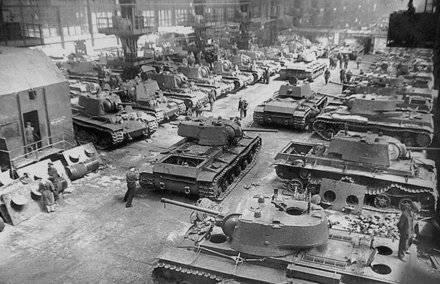
The first place of work of the young certified engineer was the famous Kirov Machine-Building Plant, to the design office of which Spirits came in the 1932 year. Here, as part of the design teams, he participated in the design and technical development of parts and components of one of the first Soviet tractors, the Universal, the experimental Soviet passenger car Leningrad-1, the first Soviet limousine produced by a limited series, and a heavy 75-ton railway crane .
By the way, the drawings of this monster, created by the order of the People's Commissariat of Defense, the design team Dukhova prepared in just 23 of the day. And this best of all testifies to the professional maturity and organizational skills of its leader, who then barely exceeded thirty.
The turning point in the fate of the gifted designer was 1936 year - Nikolai Leonidovich was transferred to the factory SKB-2, specializing in the creation and modernization of tanks. After some time, Dukhov headed a group in it that was engaged in improving the onboard transmission of the T-28 tank, and designed the most vulnerable unit himself ... At 1943, while getting acquainted with the similar node of trophy "panthers", the designer was surprised to find that the mechanism completely repeats its development five years ago: German engineers, starting to create a T-V, borrowed it from Soviet tanks captured in the first days of the war, thus saving themselves a lot of time!
In March, the 1940 of the year for the development of the world's first mine trawl based on the T-28 tank, which saved many lives of our fighters during the Soviet-Finnish war, Nikolai Leonidovich received his first state award - the modest Medal "For Labor Valor".
By this time, Dukhov was no longer just a designer - he became deputy head of SKB-2. And he solved another task that could not be solved by anyone in the world before: he created a tank, invulnerable to artillery shells.
The birth of heroes
Disputes continue as to whether the KV-1 and KV-2 tanks were good or bad, the heights of the technical excellence of their time, or the unfinished semi-finished products that gave tankers a lot of problems. Arguments in favor of that and another opinion sounds enough. We will not repeat them, since this story is not about tanks as such, but about the person who created them.
... It is believed that the author of the KV-1 and KV-2 is the head of the SKB-2 of the Kirov Plant, Joseph Yakovlevich Kotin, who was the son-in-law of the then Commissar of Defense Clement Voronezhil Efremovich (even the wits deciphered the abbreviation of the military machine, Kotin Voroshilov even deciphered the abbreviation of the military machine, Kotin Voroshilov (even Kotkin deciphered the abbreviation of the military machine, Kotin Voroshilov, even deciphered the abbreviation of the military machine, Kotin Voroshilov) But those who had the opportunity to observe the process of the birth of new tanks close up, had a different opinion on this matter.
For example, Isaac Moiseevich Zaltsman, director of the Kirov factory and part-time deputy commissar of the tank industry of the USSR, who received the title of Hero of Socialist Labor in September 1941 (!), Noted in his memoirs: “Dukhov’s contribution to the creation of HF tanks is so significant that I consider Nikolai Leonidovich the main author of this mighty machine. And on the eve of the war, he flashed other facets of his talent, proving himself to be a thoughtful analyst and painstaking closer. He saw the meaning of his activity not in the number of new projects, even the most brilliant ones, but in a well-established mass production of military equipment and its serial development. ”
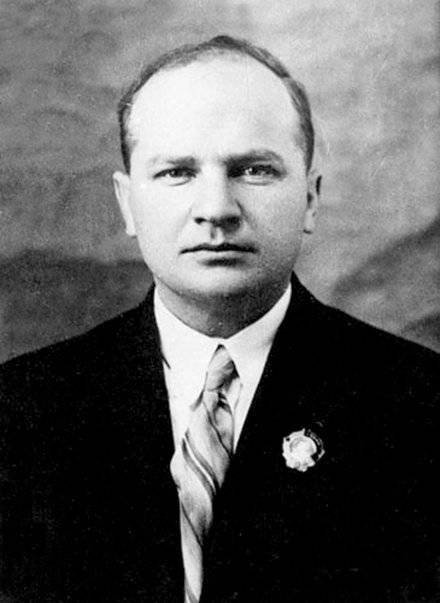
As for the KV tanks themselves, no one will disprove the fact that their appearance at the front was a real sensation, a complete and very unpleasant surprise for the Germans. In the first months of the war, the heavy KV-1 and KV-2 alone fought with ten, fifteen, even twenty enemy tanks and won the victory!
But we should not forget that these fights began long before the hot summer of 1941, in the silence of the offices of the general staffs and on the drawing boards of designers ...
The German T-II, T-III and T-IV, created by the firms Porsche, Krupp and Rheinmetall, perfectly answered the strategy and tactics of the German army. They were created for a short war, for the first sudden strike, so the designers did not care about high maneuverability: tank units had to rush along roads that had not yet been broken and to close the encirclement ring. Strong armor to these machines was not required - the enemy would be stunned and depressed, his artillery would not have time to turn around in positions, and the anti-bullet would protect from indiscriminate fire from the frightened infantry.
In the USSR, argued differently. Soviet light tanks T-26, BT-5 and BT-7 in Spain have already learned the destructive power of the anti-tank guns of the Swedish company Bofors. On the Karelian Isthmus, the same "Swede", but with an improved projectile, easily penetrated the frontal armor of the medium T-28. The Red Army urgently needed a heavy tank with anti-missile booking capable of breaking open the enemy defenses.
The task of designing such a machine was given to Nikolai Leonidovich, whom no one ever taught to create combat vehicles. But this, oddly enough, would have played a positive role: if Spirits were a “classic” developer of tanks, he would most likely have followed the beaten path — tried to create another multi-turreted monster, as heavy tanks saw then as leading designers of many countries.
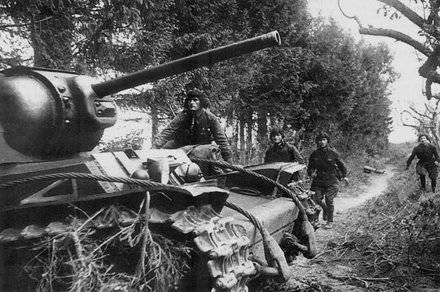
But instead, a thirty-four-year-old engineer, together with the same young colleagues who worked in his brigade, proposed a machine whose analogues did not yet exist in the world. A single-towered HF-1, armed with a 76-mm cannon and three 7,62-mm machine guns, protected by 75-mm frontal armor, equipped with a diesel engine, which allowed him to reach speeds up to 34 km / h, immediately after leaving the factory gates was sent straight for military tests to the front, then passing less than a hundred kilometers from Leningrad.
December 17 1939, the new tank went into the first battle and showed itself perfectly: when the Khottinen fortified broke through, several artillery bunkers were destroyed by fire, crushed the Finnish mortar battery, pulled T-28 back to the rear. At the same time, the car received 46 hits, but not a single projectile could penetrate its armor ...
By mid-March, the 1940 of the KV-1 had already regularly left the shops of the Kirov factory. And in April, their creator was awarded the Order of Lenin. Interestingly, the designer himself was almost late to the Kremlin to present the award. Dukhov was never a “desk specialist”, and it was difficult to find him at the factory, because he was convinced that only knowing his car as a warrior could the creator improve it as an engineer. Therefore, even becoming the deputy head of the design bureau, Nikolai Leonidovich in the spring, summer, and autumn of 1940, together with the testers, drove experienced tanks at the test site. He traveled to the former Mannerheim Line, where anti-tank obstacles remained, and there he thoroughly studied the possibilities of his car to overcome them. Apart from this shameful, he took part in the maintenance and repair of tanks.
From the creator, he turned into a researcher, critically analyzing his own work. “I have experienced a lot of machines in my lifetime, but I have never seen such a team that Nikolai Leonidovich Dukhov collected when working on a KV tank,” testified the tanks tester I. I. Kolotushkin many years later in his memoirs. - You interpret other developers, you talk about the shortcomings noticed, and they are defensively protecting their invention, trying to prove its sinlessness and perfection. Spirit and his assistants had only to say a word about some problem in the management of the tank, and they immediately tried to find out if the construction was to blame. ”
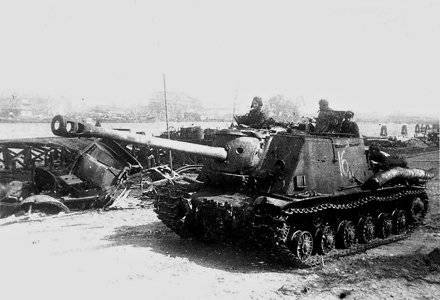
All this has allowed in the course of production to quickly improve the car. Frontal armor KV-1 brought to 105 mm, changed the shape of the mask gun, and made a cast tower. But the main innovations touched weapons. The experience of the Soviet-Finnish war showed that if the 76-mm guns were enough for a tank to fight the enemy’s tanks and field artillery, a larger caliber is required to destroy reinforced concrete pillboxes. And Dukhov ventured to put a 152-mm howitzer on the tank, which was unprecedented at that time.
Although, due to the high tower, the new machine became too noticeable, difficult to mask on the battlefield, and could fire only from a stop, but at the 1500 meter distance, the projectile of its gun easily broke 72-mm armor. A tank with such protection then did not exist in any army in the world. So hiding the HF-2 was not from anyone ...
In the first months of the Great Patriotic War, the KV remained virtually invulnerable to all German guns, with the exception of 88-mm anti-aircraft guns, firing direct fire from a dangerously short distance. The only thing that the enemy could do if he piled on Soviet heavy tanks was to force the crew to leave the car, disabling its rollers or tracks.
Nevertheless, both the KV-1 and the KV-2 paid dearly for their powerful guns and impenetrable armor: created to break through the defense, they were forced to make long marches and lead oncoming battles. And for this heavy tanks were not intended. Therefore, the lion's share of the lost HF in the summer and autumn of the 1941 of the year fell on cars that failed due to damage in the chassis, left without fuel, or simply did not have time to unload from the platforms.
Is it possible to blame the designers?
Her majesty heavy armor
In the summer of 1941, when mass evacuation of industrial enterprises from the west to the central and eastern regions of the country took place, Nikolai Leonidovich was sent at the head of a group of engineers from Leningrad to the Urals, where he was to organize the production of heavy tanks.
In Chelyabinsk, Dukhov began to work as chief designer of one of the leading departments of the factory design bureau. In February, 1942 became chairman of the expert-technical commission of the newly created bureau of inventions in tank production. At this time, under his direct leadership, a lightweight version of the KV tank, the KV-1 machine, was created, for which the designer was awarded the Order of the Red Star for the creation and successful development of production.
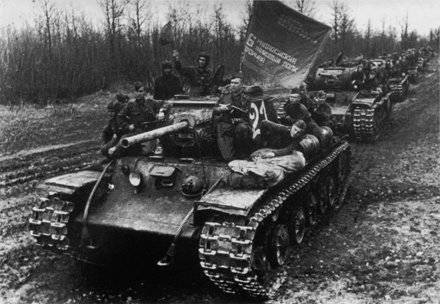
In 1943, on the basis of this particular vehicle, a team led by Nikolai Leonidovich will create a more sophisticated Soviet heavy tank KV-85, armed with an 85-mm gun and capable of fighting the German “tigers” and “panthers” on equal terms, from which our thirty-fours on the Kursk Bulge. An even more serious opponent for the Tigers could be the KV-122. But when the prototype of this machine passed factory tests, the workshops began to leave the first tanks of the “IS” series - at first glance they continued the KB line, but fundamentally completely new “heavyweights” created by Ghost.
In the summer of 1942, the Chelyabinsk tractor with the most active participation of Nikolai Leonidovich solved another major technical task of wartime - over the month, engineers and technologists conducted work to improve the design and improve the combat performance of the T-34 tank and launched the new machine. For this, Dukhov was awarded the Order of the Red Banner of Labor, and later received his first Stalin Prize - "for the improvement of the design of heavy tanks."
By decree of the State Defense Committee on 26 June 1943, Nikolai Leonidovich was appointed chief designer of the Chelyabinsk Tractor Plant, which received the name "Tankograd" during the war years. Simultaneously with the mass production of the EC-1 and EC-2 tanks, exploratory design work continued under the guidance of Dukhov. Their result, in addition to the experienced, not going into a series of heavy tanks EC-3, EC-4, "universal" KV-13, flamethrower KV-8 and KV-12, was the creation and launch into production of heavy self-propelled artillery installations IMS-122 and ISU-152. Having constructed the latter, Nikolai Leonidovich once again realized his idea of arming an armored vehicle with an instrument of "transcendent" caliber.
ISU-152, which received the nickname “St. John's Wort” among the troops, has become a real nightmare for German tank crews since November 1943. In the Wehrmacht, it was called a "can opener" - for the ability to "open" any German tank, like a tin can. In the Soviet army, these unique machines were in service until the middle of the 1970-s, until they were replaced with more advanced self-propelled artillery installations.
Nikolai Leonidovich’s contribution to the design and production of heavy armored vehicles was appreciated: in August 1944, he was awarded the Order of Lenin, in September 1945 became the Hero of Socialist Labor, in June 1946 received his second Stalin Prize for creating an IS tank -2.
It is worth mentioning that during the war years Dukhov successfully combined design and administrative activities with teaching: since the autumn of 1944, he lectured to students of the Chelyabinsk Mechanical Engineering Institute (now South Ural State University), where he headed the department of tracked vehicles and headed the state examination board.
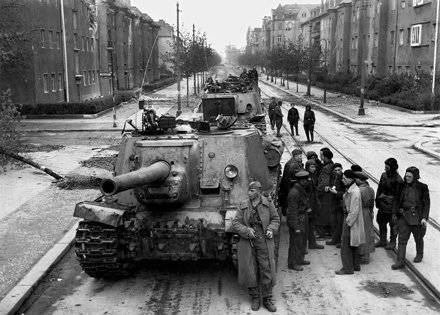
After the Victory, Nikolai Leonidovich, for the first time after a long break, and with great pleasure engaged, as he joked, with work in his specialty — designing the C-80 tractor and setting up its production.
But the designer wasn’t given much time to engage in the creation of peaceful products: politicians found a new toy for themselves - nuclear weapon...
Creators-bombs
In May 1948, Major General of Engineering and Technical Services Nikolai Leonidovich Dukhov was transferred to the Ministry of Medium Machine Building and appointed deputy to Yuli Khariton, chief designer and scientific director of KB-11, located in the secret city of Arzamas-16.
The initiator of this appointment was the head of the Soviet atomic project, Academician Igor Vasilyevich Kurchatov, dissatisfied with how things are going in the design sector, from which workers were required to embody the ideas of nuclear scientists in the metal. He asked to give him "an engineer who is capable of not only inventing unknown structures, but also integrating them into mass production." And they gave him the Spirit.
In a completely unknown to him team and a completely new for him industry, the engineering talent and organizational skills of Nikolai Leonidovich appeared more than ever before. In order not to be unfounded, let us give the word to the maitre. “Spirits very quickly got into the picture,” Academician Yuli Khariton, three times Hero of Socialist Labor, recalled those days about those days. - Nikolai Leonidovich did not hesitate to ask if something was not clear to him. And he did not care who to ask - a scientist, an engineer, a worker. The main thing is that the one who was most knowledgeable in this matter. With him, everyone eagerly made contact. His sociable, humane, docile nature, ability to defuse a heated atmosphere attracted people with a joke. They loved to work with him.
It was impossible to dream about a better helper than Spirits. He is a true, by nature, designer. Nikolai Leonidovich was generally a very talented, very talented person in many areas of science, technology, art. I think he would be, for example, both a great musician and an artist.
But he would never be either one or the other, or the third, because he simply could not be a constructor. His engineering genius is innate. Dukhov had an extraordinary ability to clarify the most complicated questions and find simple solutions to complex, seemingly intractable problems. ”
By the end of the summer of 1949, all issues related to the design of the first Soviet atomic bomb, designated RDS-11 (in a closed decree of the Council of Ministers of the USSR, determining the order of its testing, the bomb was called “special jet engine”) were resolved in KB-1. And 29 August at the test site in the Semipalatinsk region of the Kazakh SSR was produced undermined.
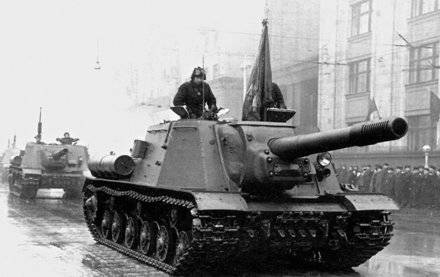
After that, the question arose about the serial production of the bomb - the country needed not a scientific device, but ammunition that can be delivered to the territory of a potential enemy. The solution of this technical problem, along with the manufacture of new experimental "special jet engines", fell on the shoulders of Nikolai Leonidovich Dukhov, who in October 1949 was twice the Hero of Socialist Labor.
By the beginning of 1950 in Arzamas-16 (now Sarov), two RDS-11 were assembled in experimental workshops of KB-1, by the end - nine more. By March, 1951, in a closed city, hidden in the woods on the border of the Gorky Region and the Mordovian ASSR, the disassembled 15 atomic bombs, which at that time comprised the entire nuclear arsenal of the Soviet Union, were stored.
But the work on building it went at a high rate. October 18 1951 at the Semipalatinsk test site was tested product RDS-3 weighing 3,1 tons and power 40 kilotons - already tested like a bomb by dropping a Tu-4 bomber and exploding at an altitude of 380 meters. After a short time, the RDS-4, dropped by the Il-28 bomber, was pulled from the 11-kilometer altitude. It became the first mass-produced tactical nuclear munition.
Scientific thought moved on, and after it went the design thought of Nikolai Leonidovich Dukhov. And 12 of August 1953 of the year over the Kazakh steppe thundered a thermonuclear explosion: the Tu-16 bomber erupted from itself "the product RDS-6 s" - the first Soviet hydrogen bomb. The American thermonuclear device at that time measured the size of a three-story house and could in no way be considered ammunition.
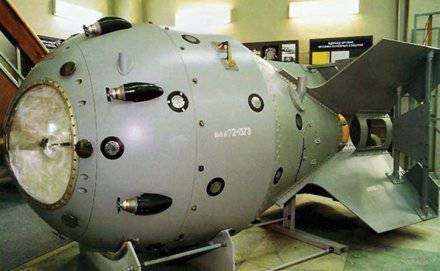
After successfully testing the first hydrogen bomb, a large group of scientists, designers, and production organizers were awarded state awards. As mentioned above, Nikolai Leonidovich Dukhov and five others became the first in the USSR three times Heroes of Socialist Labor.
The creator of the "nuclear shield"
In May 1954, Nikolai Leonidovich was appointed director, chief designer and supervisor of the Research Institute of Automation, created by a special Soviet secret decree of the USSR Council of Ministers based on one of the Moscow numbering plants (now it is NL Dukhov Automation Research Institute) . And steadfastly led this institution for ten years.
After testing the first atomic bombs, it became clear that in addition to aircraft, the means of delivering nuclear ammunition could be torpedoes, ballistic and cruise missiles, as well as special artillery shells. Therefore, the emergence of a closed research institute of automation has become an important stage in the creation of the Soviet "nuclear shield".
Nikolai Leonidovich, standing at the head of a research institute, identified the main areas of his work - the creation of nuclear weapons for strategic and tactical weapons systems, electrical and neutron systems for initiating the detonation of nuclear weapons, instruments for automating nuclear weapons, and unified instrumentation.
For ten years, under his leadership, three generations of automation units were developed at the research institute, the first generation of nuclear munitions for seventeen different carriers — the P-7 ballistic missile, the T-5 torpedoes, the first Soviet airborne and sea-launched cruise missiles, created a whole range of electromechanical instruments for monitoring the status of special ammunition and automation units of their carriers. Therefore, Nikolai Leonidovich Dukhov is rightfully considered the founder of the national design school for nuclear ammunition.
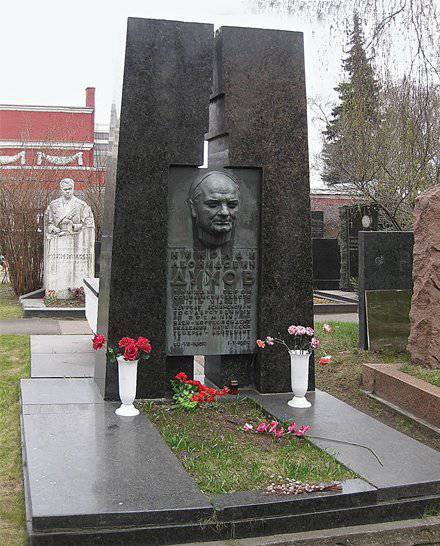
And not for ideas and suggestions, but for designs implemented in metal, mastered by industry, he became a corresponding member of the USSR Academy of Sciences and a laureate of the Lenin Prize.
... It was already stated that many of the first persons of the Soviet atomic project personally carried out responsible, all the more dangerous operations with nuclear charges. So Spirits, during the "factory fittings" and just before the tests at the test site, put plutonium and uranium fillings into the warheads of the first atomic bombs.
Constant contact with a radioactive substance did not pass without a trace - the designer developed cancer of the blood. He was accustomed to working for wear, regardless of time and his own health, at the first manifestations of indisposition he simply dismissed doctors. And when the doctors sounded the alarm, it was too late.
And Nikolai Leonidovich “burned out” in just a few weeks, not having survived several months before his sixtieth birthday. .
Information